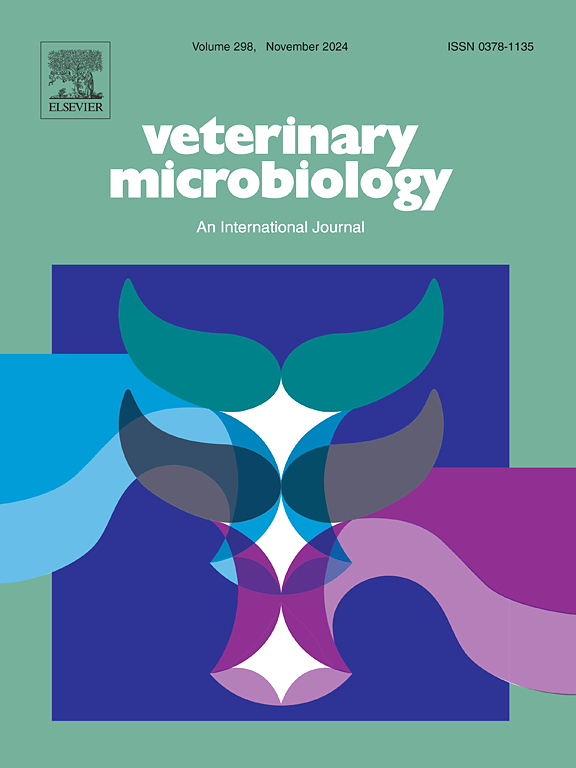The antioxidant protein PntA coordinates with OmpW to resist oxidant stress in Actinobacillus pleuropneumoniae
IF 2.4
2区 农林科学
Q3 MICROBIOLOGY
引用次数: 0
Abstract
Bacteria have evolved various strategies to combat oxidative stress caused by reactive oxygen species (ROS). Outer membrane proteins including OmpW play multiple roles in bacterial physiology, stress responses and virulence. In this study, the OmpW protein of Actinobacillus pleuropneumoniae, an important porcine respiratory tract pathogen, was found to contribute to virulence but concurrently to reduce resistance to oxidative stress. An ompW deletion (ΔompW) showed attenuation in mice, and decreased adherence to pig tracheal epithelial cells and resistance to hyperosmotic stress, compared to the wild-type (WT) strain. However, the ΔompW strain exhibited increased resistance to H2O2, enhanced survival ability within macrophages, and lower intracellular ROS level. OmpW may serve as a H2O2 channel. Further study showed that exposure to H2O2 significantly suppressed ompW transcription in the WT strain. Overexpression of these two proteins in WT and ΔompW increased the antioxidative properties of the bacteria. Furthermore, by construction of the double gene mutant ΔompWΔpntA, it was found that PntA could reverse the effects of OmpW on the bacterial survivability and intracellular ROS level after H2O2 treatment. Therefore, by interacting with OmpW, PntA alleviated the increased oxidative stress sensitivity caused by OmpW. These results suggest a mechanism whereby antioxidant proteins collaborate with OMPs to protect bacteria from oxidative stress.
求助全文
约1分钟内获得全文
求助全文
来源期刊

Veterinary microbiology
农林科学-兽医学
CiteScore
5.90
自引率
6.10%
发文量
221
审稿时长
52 days
期刊介绍:
Veterinary Microbiology is concerned with microbial (bacterial, fungal, viral) diseases of domesticated vertebrate animals (livestock, companion animals, fur-bearing animals, game, poultry, fish) that supply food, other useful products or companionship. In addition, Microbial diseases of wild animals living in captivity, or as members of the feral fauna will also be considered if the infections are of interest because of their interrelation with humans (zoonoses) and/or domestic animals. Studies of antimicrobial resistance are also included, provided that the results represent a substantial advance in knowledge. Authors are strongly encouraged to read - prior to submission - the Editorials (''Scope or cope'' and ''Scope or cope II'') published previously in the journal. The Editors reserve the right to suggest submission to another journal for those papers which they feel would be more appropriate for consideration by that journal.
Original research papers of high quality and novelty on aspects of control, host response, molecular biology, pathogenesis, prevention, and treatment of microbial diseases of animals are published. Papers dealing primarily with immunology, epidemiology, molecular biology and antiviral or microbial agents will only be considered if they demonstrate a clear impact on a disease. Papers focusing solely on diagnostic techniques (such as another PCR protocol or ELISA) will not be published - focus should be on a microorganism and not on a particular technique. Papers only reporting microbial sequences, transcriptomics data, or proteomics data will not be considered unless the results represent a substantial advance in knowledge.
Drug trial papers will be considered if they have general application or significance. Papers on the identification of microorganisms will also be considered, but detailed taxonomic studies do not fall within the scope of the journal. Case reports will not be published, unless they have general application or contain novel aspects. Papers of geographically limited interest, which repeat what had been established elsewhere will not be considered. The readership of the journal is global.
 求助内容:
求助内容: 应助结果提醒方式:
应助结果提醒方式:


